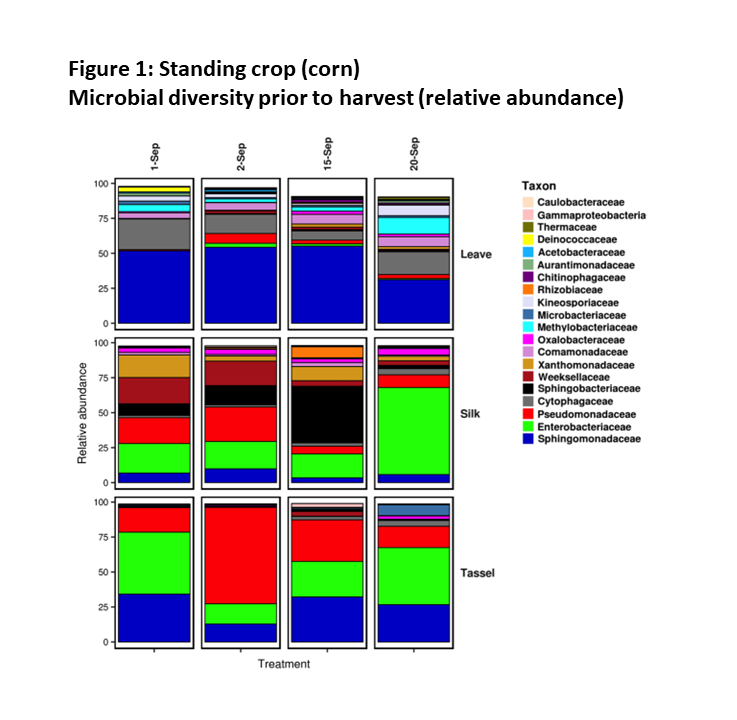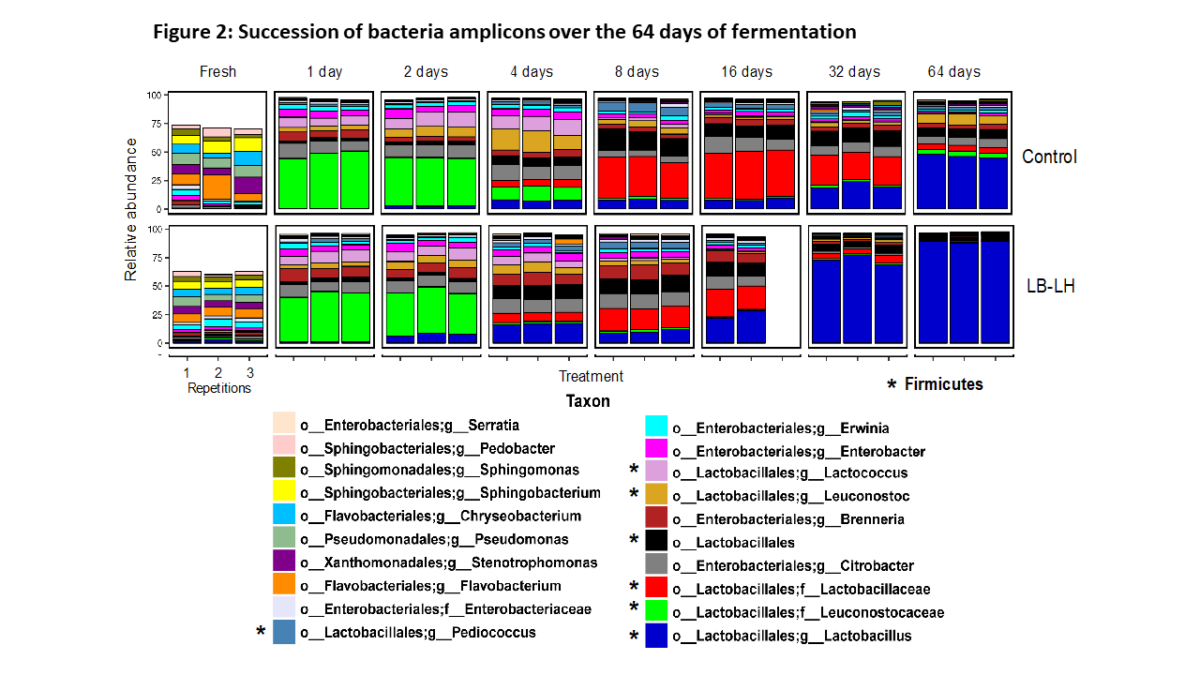Blog | Reading Time 2 minutes
Can you afford not to treat your corn silage?
Did you know that poorly managed and untreated maize can be subjected to significant losses of nutritional quality and physical dry matter (DM) of 20% or greater?
In a time where purchased feed cost is so high, this can have a devastating impact on farm profitability.
Microbial diversity
Many producers believe that corn silage will ferment quite adequately naturally, due to the high sugar content and the easy-to- ensile nature of the crop. However, the advent of new DNA analytical methods such as metagenomics suggests that corn silage is no different than other forages when trying to produce the best quality silage.
Over just a short growing period, the microbial diversity of a standing corn silage can significantly change week to week, and many factors such as weather and field management can play a part. In figure 1, the different colored bars represent different types of bacteria in a standing crop of maize. Many of these bacteria can be undesirable with regards to making good quality silage. Therefore, if the corn is not inoculated at harvest, there is a risk that these undesirable bacteria will dominate the fermentation process, resulting in a poorly fermented silage.
Poorly fermented maize silage will lose DM both through the ensiling period due to undesirable bacterial growth, and through increased spoilage when the silage is opened (due to yeast and mold growth in aerobic conditions). This significantly impacts costs as this lost silage must be replaced with purchased feeds.
The impact of condition specific inoculant
Treating corn silage with a condition specific inoculant will not only maintain the corn silage quality, but it also reduces DM losses through the fermentation and losses due to instability. It does so by actively inhibiting the growth of yeasts and molds.
The abundance and types of bacteria found in corn silage change in silage treated with MAGNIVA Platinum 1 compared to an untreated control over 64 days (Figure 2). The abundance of desirable Lactobacillus populations (blue bars) increased much more quickly than the control. At 64 days ensiling, the only type of bacteria to be found in the treated silage was Lactobacillus, which helps reduce the risk of heating or spoiling.
Published Aug 17, 2023 | Updated Aug 31, 2023
Related articles
Need specific information?
Talk to an expert
